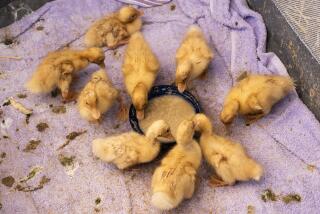Creator Seeks Reprieve for Artificial Reef
- Share via
BALBOA — An outlawed artificial reef made of old tires and PVC pipe is bobbing on the ocean floor off the Balboa Pier as its creator tries one last time to persuade state regulators to spare the structure.
Aquaculturist Rodolphe Streichenberger was denied a permit two years ago and never asked for one when the experimental reef was built in 1988, but he remains undeterred.
Streichenberger will plead his case for the unorthodox mussel-breeding habitat at a one-hour workshop Wednesday in Los Angeles, an event the California Coastal Commission promised to hold when it turned down his permit application.
Unless the 10-acre reef gets an unlikely reprieve, the commission could order it dismantled, an edict Streichenberger said he would fight in the courts.
An economist by trade, Streichenberger founded the Marine Forests Society and built the artificial reef as a research laboratory for his plan to “ranch” the ocean floor by breeding mussels, which he believes could provide a cheap source of food.
The lab consists of 1,500 used tires, 2,000 plastic gallon jugs and 100 20-foot sections of PVC pipe known as “mussel columns.”
Typically, artificial reefs are made of large stones, but Streichenberger argues that using recyclables is environmentally superior to mining rock quarries.
The Coastal Commission in 1997 rejected Streichenberger’s after-the-fact permit application for the project, ruling that it was “inconsistent” with state resource protection policies.
Before the Coastal Commission acted, state Fish and Game officials determined that the experiment was unlikely to ever lead to a “viable aquaculture project.”
Streichenberger insists, however, that the artificial reef is a wonderful breeding ground for mussels, which are flourishing in the unconventional habitat.
“It’s very successful,” he said.
More to Read
Sign up for Essential California
The most important California stories and recommendations in your inbox every morning.
You may occasionally receive promotional content from the Los Angeles Times.










